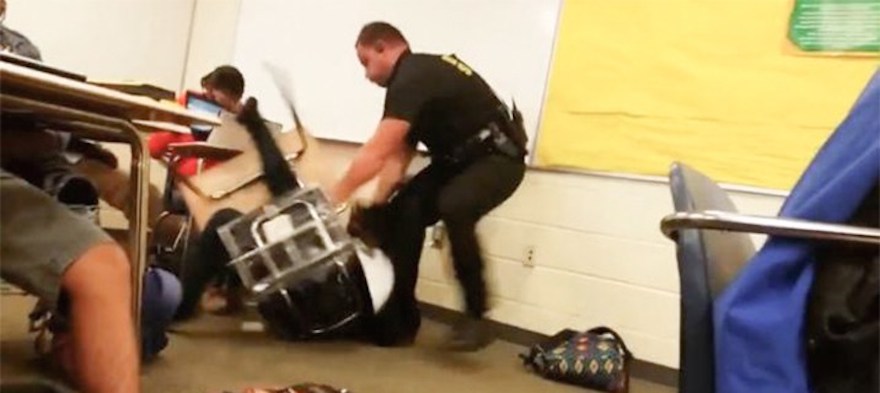
Feb 16, 2018 12:00:00 AM
 Many civil rights activists refer to a “
school-to-prison pipeline” whereby students, especially students of color, are effectively removed from schools through cycles of repeated arrests, often funneled into juvenile disciplinary systems. The ramifications extend far beyond their school-aged years, as these students become susceptible to the trappings of the criminal justice system as adults. Niya Kenny’s experience was just one of many similar narratives. Officer Fields was fired for his misconduct, though there was no
further investigation into potential civil rights violations. Niya and her fellow classmate ultimately were not prosecuted for disturbing schools, though Niya did not return to Spring Valley High School. Instead, she attained her GED, and continues her activism. But schools still have a long way to go. So what can teachers do?
Many civil rights activists refer to a “
school-to-prison pipeline” whereby students, especially students of color, are effectively removed from schools through cycles of repeated arrests, often funneled into juvenile disciplinary systems. The ramifications extend far beyond their school-aged years, as these students become susceptible to the trappings of the criminal justice system as adults. Niya Kenny’s experience was just one of many similar narratives. Officer Fields was fired for his misconduct, though there was no
further investigation into potential civil rights violations. Niya and her fellow classmate ultimately were not prosecuted for disturbing schools, though Niya did not return to Spring Valley High School. Instead, she attained her GED, and continues her activism. But schools still have a long way to go. So what can teachers do?
Stephan Maldonado is a New York City-based writer and blogger who got his start writing for Teach.com, a comprehensive resource for current and aspiring teachers, where he writes to this day. He now covers various topics including health, fitness, and digital marketing, though his passion remains education. When he's not blogging, Stephan is working on publishing his first novel.
Few issues in education spark more tension and debate than standardized testing. Are they a tool for equity or a burden on students? A necessary check on school systems or a flawed measure of...
Charter schools are public schools with a purpose. Operating independently from traditional school districts, they're tuition-free, open to all students, and publicly funded—but with more flexibility...
Despite the benefits of a diverse teaching force, prospective teachers of color fall out of our leaky preparation pipeline at every stage: preparation, hiring, induction, and retention. Here’s what...
Ed Post is the flagship website platform of brightbeam, a 501(c3) network of education activists and influencers demanding a better education and a brighter future for every child.
© 2020-2025 brightbeam. All rights reserved.
Leave a Comment